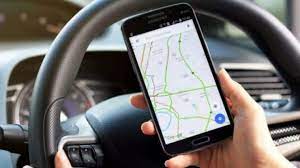New Google Maps improves the assistance given to drivers of electric vehicles (EVs) who are looking for charging stations. This is a helpful option for people who need a quick charge in a hurry.
Users of Android Auto who have electric vehicles (EVs) registered in their app settings will now receive greater support when using Google Maps for navigating through Android Auto. Notably, the Categories menu within the app has been improved to place a higher priority on charging points than petrol stations, given that these automobiles do not require the use of petrol.
This upgrade takes care of an essential requirement for drivers of electric vehicles by making it possible for them to easily discover charging stations while they are travelling.
Users have the ability to conveniently explore nearby locations that fit into various categories by using the Categories menu. Some examples of these types of venues are restaurants, grocery stores, coffee shops, petrol stations and charging points. When users select a category, the app will show them numerous venues that are highly recommended based on how well they match their interests.
Read also: Google Introduces ‘Unknown Tracker Alerts’ for Android users
The benefits
This upgrade is especially helpful for EV drivers who unexpectedly find themselves in unfamiliar places and have an urgent need to locate a charging station. The app’s navigation strategy has been modified to better accommodate the changing requirements of drivers who are conscientious about the environment in light of the current trend towards environmentally friendly transportation and electric automobiles.
Users are able to further personalise their experience by not only identifying their car as an electric vehicle (EV), but also by defining the type of charger that is required and the desired charge speed. This additional information helps to enhance the list of recommended charging alternatives, which ensures that each motorist will have an experience that is uniquely tailored to their needs.
More on Google Maps integration with EVs
At the moment, this improvement is only accessible through the version of Google Maps that is compatible with Android Auto. Even though it is still possible to conduct charging station searches using the default Maps app, the availability of the shortcut varies greatly depending on the preferences of the vehicle.
This upgrade comes after a change that was made in September of last year that gives the app the ability to adjust its individualised route recommendations to assist electric vehicle drivers in travelling more effectively. In a manner that is analogous to how the function operates for drivers of other vehicles, Google Maps analyses the information it possesses, considers which route it believes will be the most effective and then highlights that route with an image of a green leaf.
If the most economical route is not also the fastest path, the difference in travel time between the two is usually not significant. Choosing the most efficient route, even if it is slower, means that you will use less fuel or charge to get from point A to point B, which will presumably save you money in the long run.
In spite of these developments, Google Maps is still up against competition from the built-in navigation systems that are standard in many electric vehicles. These proprietary systems are exceptional in their capacity to monitor the status of the vehicle and modify routes according to the available charges. Google Maps is aware of this difficulty and is making concerted efforts to improve the quality of the services it provides.
